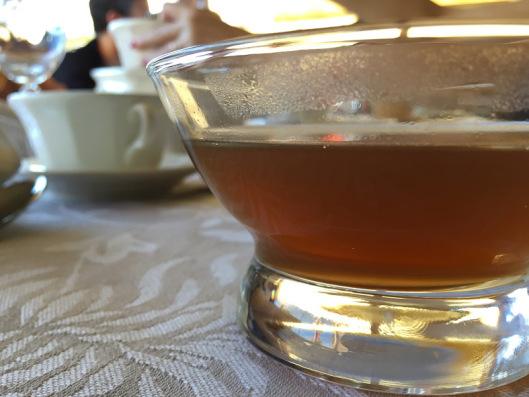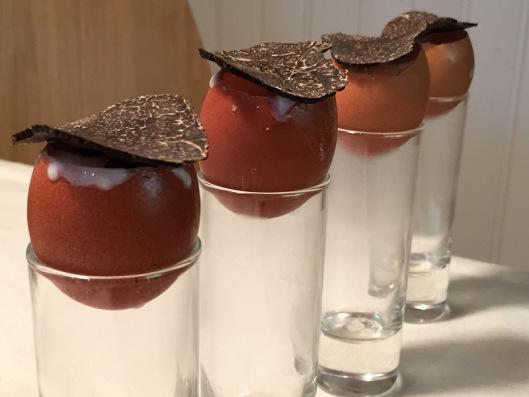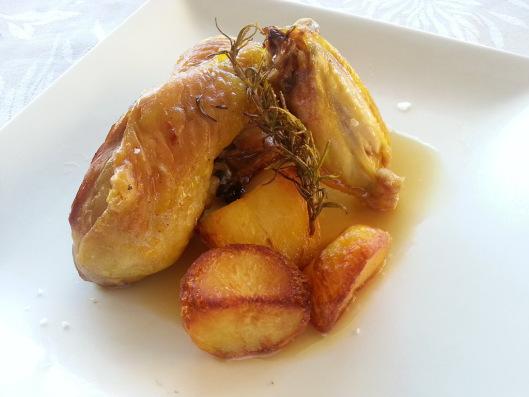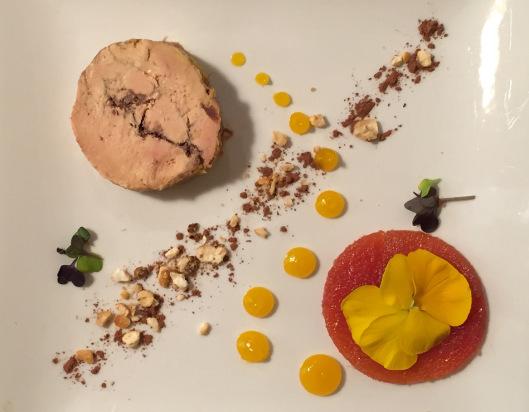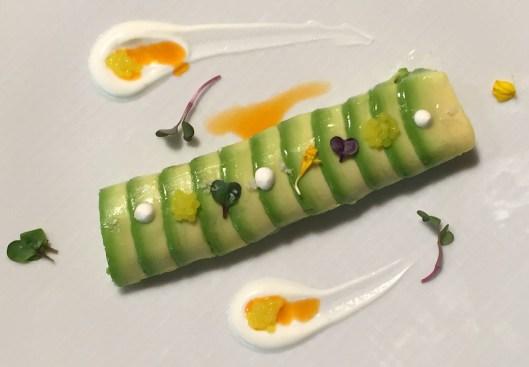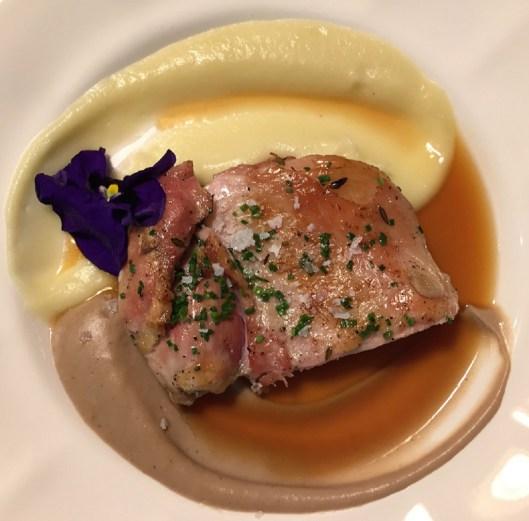
EnriqueB
participating member-
Posts
398 -
Joined
-
Last visited
Content Type
Profiles
Forums
Store
Help Articles
Everything posted by EnriqueB
-
Yes, friends here have also cracked countertops made of different materials like silestone. I use a cambro or GN inside another one, it makes a kind of double-wall for insulation and also protects the countertop.
-
If your product is very fresh you can go ahead, I do it from time to time and the result is good. Though you should avoid acid in the bag like the lemon, as others have said it can cook the meat or fish. With meat also avoid salting before bagging, as the texture will change and look (a bit) like cured meat. With fish, you can pre-salt as that firmness is actually useful in many cases. With fish you should not keep in the bag for long, but if it is extremelly fresh having it bagged for 24 hours will not be as good as the same day but still can be ok, and in fact a better option than keep it 24 hours non-bagged.
-
It is spelled "saLchicha", but it just means "sausage" in Spanish, usually fresh but could also refer to cured sausage. There are hundreds of variations, so searching for "salchicha" is too generic.
-
I also cook fish sous-vide from frozen with excellent results. That said, I keep my freezer at around -30ºC, which freezes better than the standard -18ºC.
-
Not the case. Already shown in this forum many times: http://forums.egullet.org/topic/144300-sous-vide-recipes-techniques-equipment-2011/page-2#entry1779665 https://www.youtube.com/watch?v=naLhexUJjQ8&feature=youtu.be
-
Another player enters the sous vide field: Paragon Induction Cooktop
EnriqueB replied to a topic in Kitchen Consumer
I don't know what they say in their marketing material. The fact that it is enough for almost all home cooking I have verified myself during the last 4 years, and, as said, I have compared with several brands of inmersion circulators and controllers. Of course, any other brand of water bath would have the same benefits. First, SVS is more useful for many people because it is a self-contained unit with everything included. Whereas you can use the new inmersion circulators in any pot, at some point, especially for long cooking times, you will need a recipient that is properly insulated and with a perforated cover. Getting this is something that people in this forum may be very willing to do, but not every average user. Having a double-wall covered recipient from scratch included in the set is valuable (and its extra price should be factored into the circulator price). Second, SVS is totally silent. Even low-noise circulators are annoying when they are working 72 hours in your kitchen, and you suddenly feel the relief when they are switched off. Third, it is totally maintenance-free. Heater, thermometers and circulation bomb are not exposed in the water, so no cleaning required. No hasssle if an egg breaks or similar. Fourth, it can be used to cook liquids like stocks directly in the recipient, without bags and in big quantities. Fifth, it is the only machine I have that will not stop if electricity goes off for a few seconds, a big plus when cooking hard meat cuts for long times. All my inmersion circulators will stop "for safety reasons", whereas SVS remembers its time & temperature settings and continue cooking. In my area rarely we will have a prolonged shutdown, but we may have short electricity interruptions and I may be sleeping or out of home. With the other equipments I am forced to throw the food away, not with the SVS. With SVS I decide if the interruption was long enough so I should throw it or not. This feature, as opposed to the other benefits, is specific to SVS (whereas the other advantages are general of water baths). Of course, SVS is more expensive and has other drawbacks with respect to circulators, but when it comes to long cooking processes (my favorite use of sous-vide) I always resort to my SVS, because it excels there and circulation is pretty much irrelevant in this case, whereas for short cooking times I normally use my circulators. -
Another player enters the sous vide field: Paragon Induction Cooktop
EnriqueB replied to a topic in Kitchen Consumer
For those who wonder about the lack of circulation, I thought SVS had proved that non-circulating baths are about enough for almost any sous-vide home cooking. I do in fact teach sous-vide classes for home cooking, I own a SVS Demi as well as a couple of circulators ("old school" SWID and "new school" Anova PC) and an external control unit (SV Magic - eiPot) and still think SVS is the most useful unit for most home cooks. Whereas the GE unit may have the issues that some of you are mentioning, I see it as a big step forward. When something like this is integrated into your home main induction stovetop (and here in Europe most houses have induction hobs) you will be able to control temperature of many cooking processes -not only for cooking sous-vide in pouches- without occupying any extra counter space. Yes, the technology has to improve and the prices must go down, but this is an excellent idea that shows potential ways or incorporating sous-vide into the kitchen for the masses. Really like it. -
No, you cannot fry in a pressure cooker like InstantPot that is not designed for frying. The gasket will likely melt and valves may malfunction, a very dangerous scenario.
-
-
That's practice in many high-end restaurants after the advice of Bruno Goussault, as btbyrd says. The question is whether the increased safety risk and consequent shorter conservation time is worthy the slight improvement at home. At the restaurant they can better control the process, minimize conservation time, keep in fridges with temperatures < -3ºC assured, etc. Not so much at home, where I don't consider it is worth it.
-
Because this is cornstarch-thickened you need to almost boil it for a couple of minutes to kill the enzymes in the yolks that would otherwise thin it after the initial thickening. Don't know what the exact threshold temperature would be for this recipe, but I guess you likely need to take it to 95ºC/203ºF.
-
Agree. I also think it has to do with the fact that brining modifies texture. Even low-salt percentage brining promotes salt-soluble miofibrillar proteins to leave the meat fibers and "glue" them, one of the basis of charcuterie. Because culturally we tend to prefer less cooked beef this "cured" texture is less accepted in beef than in pork and chicken, as it feels like brined beef is not "as fresh". Because pork and chicken have been traditionally cooked at a higher temperature, the higher juiciness effect of brining kind of "compensates" the change in texture, but not so much in beef.
-
Following day, Christmas dinner topic was "the whole poulard" but served in several dishes: Duck & poulard consommé 63ºC-eggs from "young hens" (the very first eggs they lay), served on its own shell, with black & white truffle Poulard breast and vegetables vanilla "escabeche", with poulard skin cracker Roasted poulard thighs and wings, with Heston Blumenthal's roasted potatoes (roasted on poulard's own fat)
-
Christmas Eve's dinner: Foie gras micuit, cocoa, corn nuts, quince meat, passion fruit fluid gel Avocado roll, prawn, granny-smith, greek yoghourt, yuzu (adapted from Eleven Madison Park) Ricotta, black truffle & porcini ravioli, sauce made from reduced duck & poulard stock with truffle jus emulsified with butter and foie gras fat, black truffle (adapted from a dish in this same thread from mm84321) Suckling lamb shoulder (24 hours / 63ºC), Heston Blumenthal's pommes puree, chestnut & black garlic puree, lamb demiglace
-
Evernote
-
Very good selection, pimodan. I would add StreetXO as the excellent little brother of DiverXO. Also excellent restaurants to consider are Álbora and Sudestada (fusion spanish-south east asian)
-
ANOVA is sent from USA. My experience it that it will be stopped in the borders and you will have to pay 21% VAT taxes plus some fixed fees. With other kickstarter projects I did not have to pay, so I expect to save that also with Anova, but with regular online shopping yes it will be stopped. I thought the other "unexpensive" circulators like Sansaire and Nomiku could only be bought from US, but if there are UK shops selling them that implies a lower cost. I don't have the unit so I don't have any opinion on the touch screen. No, there's no place in Spain that I know of where you can try these.
-
I am not so sure, see this study that challenges heat resistance of Campylobacter and others in chicken under some conditions: Extreme Heat Resistance of Food Borne Pathogens Campylobacter jejuni, Escherichia coli, and Salmonella typhimurium on Chicken Breast Fillet during Cooking
-
Hi cocinaor. If you look in the threads you will see that Anova has a good reputation in this forum. Several friends in Spain also bought their first model and are quite happy with it. I have backed their kickstarter second model, as I find the moveable attachment makes it a very useful unit, and am waiting for it being delivered. All sous-vide models from Steba can be found under other companies, so I also assume they are all branding the same machines made in China. For example, their water bath SV2 can be found under the following different brands (aspect and measures are exactly the same, but power varies...): Steba SV2: http://www.steba.co.uk/themen/sousvide/251/ VonShef Premium: http://www.ebay.co.uk/itm/VonShef-Premium-8L-Sous-Vide-Cooking-Water-Bath-Oven-Slow-Cooker-800W-/351097020789 Garhe Compact: http://www.envasadoravacio.com/Equipo-domestico-Sous-vide-Compact-de-garhe
-
Have you ever made a side-by-side comparison? I have, with 1 hour, 3 hours, and 6 hours pork tenderloins in 56ºC water, and the change is clearly noticeable. Was the 6 hours tenderloin still pink, tender and juicy (can't judge 12 hours as I have never tried)? Yes, but not as good as the 3 hour version. Was the 3 hours tenderloin still pink, tender and juicy? Yes, but not as good as the 1 hour version.
-
I already answered you in the other similar topic you opened on the same issue that likely one source and the other were considering different set of pathogenic bacteria (i.e. only salmonella vs salmonella & listeria). In order to compare sources you also need to check out their definition of "pasteurization", which happens to not always be the same. Verify the number of log-reductions (or "D") that the stated pasteurization levels achieve in each table. Some tables are intended for any population and as such are conservative and chose target reductions that fit inmuno-depressed people, whereas some other tables are for healthy non-inmuno-depressed people or for shorter conservation times and chose lower D-reductions. Even regulations differ in this respect between countries or geographic areas. Pasteurization is not just a "yes/no" perfectly defined concept with a single definition.
-
I have both at home and cannot consult them now, but something to take into account is that in simplified tables in MC they only consider Salmonella for pasteurizing poultry, if I remember correctly. "Full" pasteurization should consider also other more heat-resistant or slower-to-kill pathogens like C. Perfringens or Listeria, like the SousVideDash app does, and that results in longer pasteurization times.
-
Many thanks, my previous searches weren't successful and more people was commenting the same in the kickstarter page. I'll look that up.


